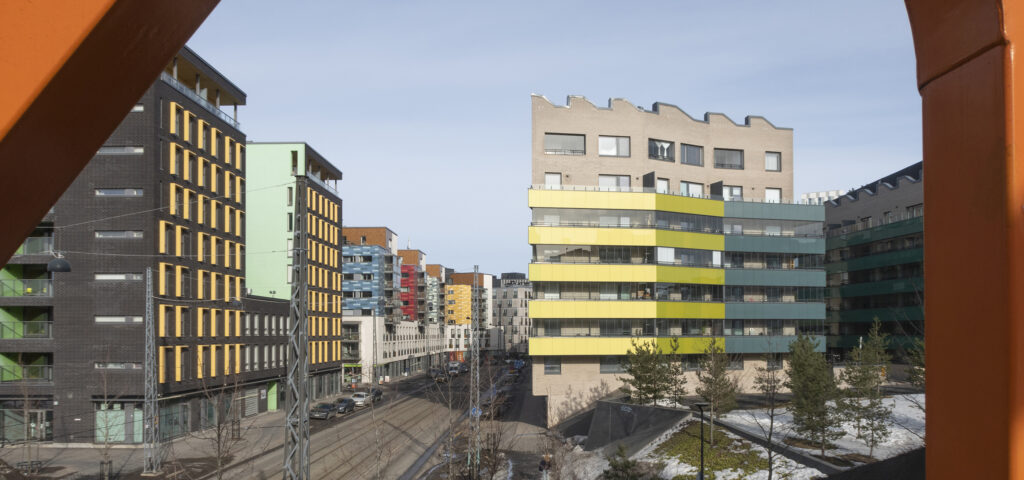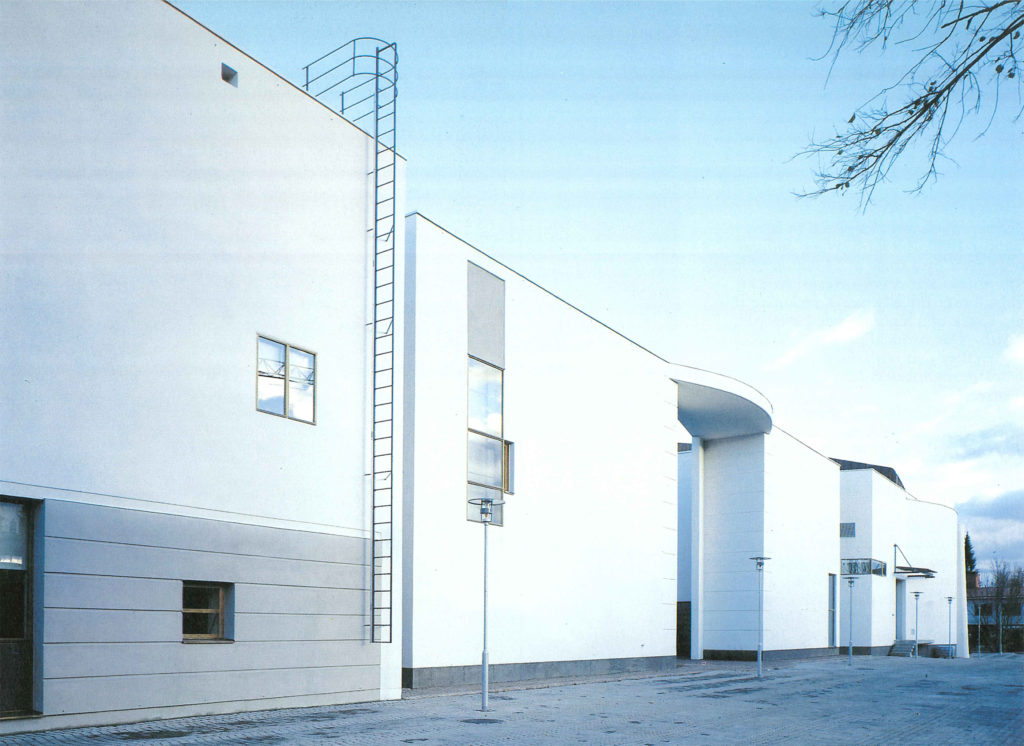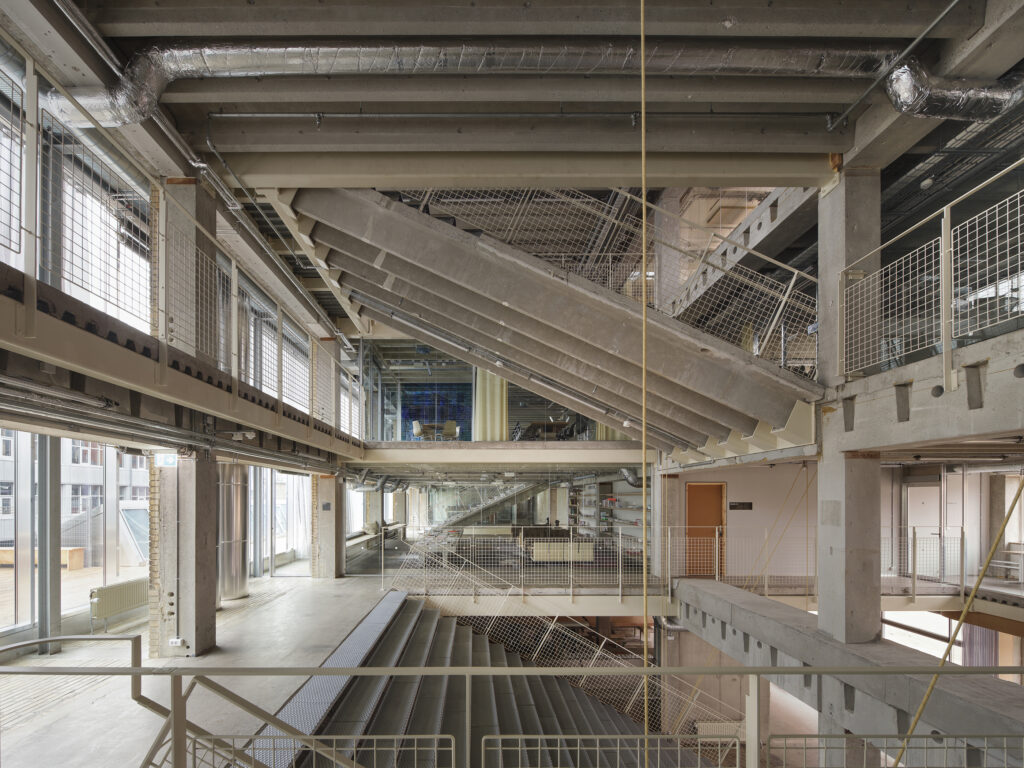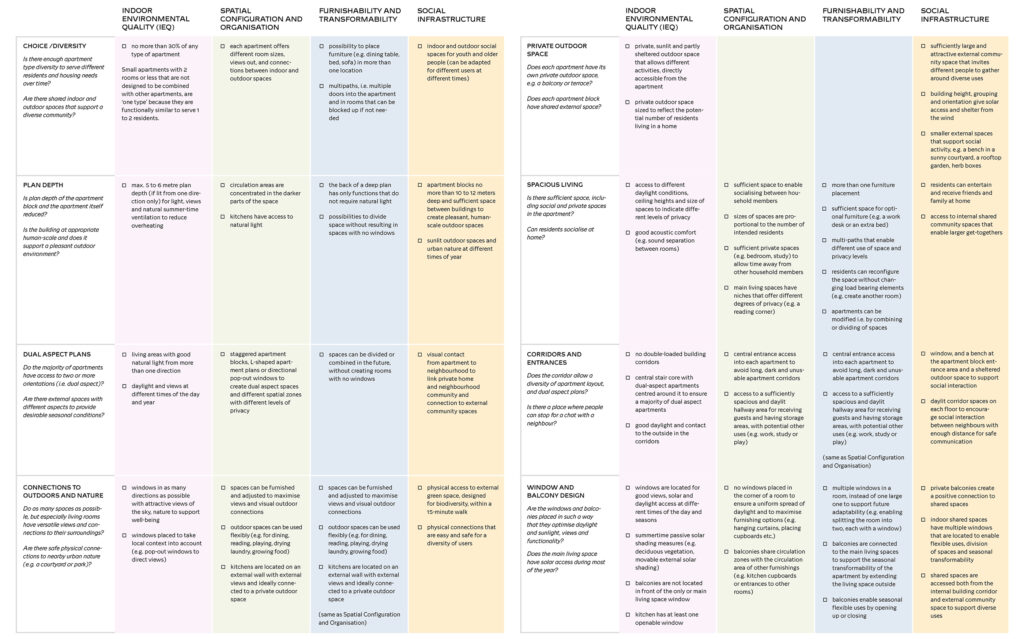On Doughnuts, Definitions, and the Troubles with Exhibiting
This autumn, the Oslo Architecture Triennale focussed on the problems of continuous growth. Dubravka Sekulić, an architect, professor and researcher of critical spatial issues, writes about her thoughts at the Triennale.
Oslo Architecture Triennale: Enough. The Architecture of Degrowth.
26 September – 24 November 2019
With multiple biennials and triennials overlapping and taking place especially this autumn, it may be that the exhibitionary complex of large architecture exhibitions has peaked. At least three of the current large exhibitions directly address both the current crisis of the world as we know it, and the crisis of imagining different futures. The Oslo Architecture Triennale says “Enough” and focusses on the architecture of degrowth, the Chicago Architecture Biennial is titled “…and other such stories”, and the inaugural Sharjah Architecture Triennial calls for “Rights for Future Generations”. It seems that both in exhibitions and on the streets, people are mounting a challenge to business as usual – best put into words by the protestors in Santiago: “We won’t return to normality because normality was the problem.”
I was thinking about the state of the world and architecture while taking part in the opening programme in Oslo and about how each of the three events I mentioned relied, in one way or the other, on oil money to create an opening or an opportunity to envision a future that goes beyond fossil fuels and global inequality.

While in Oslo, I was also thinking about doughnuts a lot. Doughnuts, in Western culture, seldom symbolise anything beneficial, neither for the body nor a city. Doughnuts are unhealthy and doughnut shops a sign of gentrification. However, a doughnut is an important figure in the degrowth movement and theory. Doughnut economics, coined by the economist Kate Raworth, got its name because of the shape of the graph which captures the most desirable economic relation for both humans and the environment by “meeting the needs of all within the means of a planet.” Doughnut economics brings into question current definitions and parameters tied to the idea of permanent growth that are used to determine whether the economy is in a good shape or not. The concept also shows that the way in which wealth and prosperity are defined has to be radically reconsidered.
While the Oslo Architecture Triennale (OAT) may have evoked the doughnut figure, it was never shown in the exhibition. Still, the triennial’s grand statement remains that, in order for humanity to survive, the current approach to spatial development has to change radically. And, while not supplementing this statement with one grand figure, OAT underlined it by offering a plethora of smaller positions, all of which aimed to say: enough – we need to do things differently, but there is no silver bullet, nor a magic rendering with a one-size-fits-all solution.
Curators have understood well that the exhibition is a site of power.
Solutions are, of course, closely connected to the issue of power. Curators have understood well that the exhibition is a site of power and have tried to challenge that power by naming the main exhibition space “The Library,” thus changing the regime of attention and perception of all exhibited works.
The content of the library is a wide range of projects and concepts commissioned in the four main collections: subjective, objective, systemic, and collective, each delineated as one “room” in the space. While it is easy to situate each collection, the further situating of specific projects becomes a task that each visitor has to navigate on their own. Most of the encounters in the show are by chance, and after a while, a visitor may feel overwhelmed by the amount of information related to the some 60 exhibited projects.
By wishing to showcase a plethora of solutions and knowledge to lean on while transitioning towards the architecture of degrowth, the curatorial take suffers from an overflow of information and overt accumulation. Pushing the library metaphor further, with some of the research presented in the format of a book, some of the potential gems are rendered almost invisible, such as the amazing Hus på vei / Moving Houses project by Norwegian architecture firm Fragment. The problem of retrieving information could have been tackled by introducing other crucial elements of a library: a catalogue and a librarian. Without them, each of the four collections resemble more a cabinet of (good practice) wonders than a library, although the curators have actually managed to work against the strict museum regulations and allow visitors to check out and take home selected exhibited items – especially the books.
For many biennials and triennials, the exhibition is only the spine of a larger discursive project, which tries to go beyond the geographical, spatial, and temporal constraints of the format. In order to bring the conversation on degrowth into the public sphere, the OAT has partnered with an open online platform dedicated to architectural writing for a series of critical texts. This addition has liberated the printed catalogue of the OAT 2019 to become an experiment in using fiction as another way of tackling the encounter of degrowth with space, society, and the future.

Museum, Oslo Architecture Triennale 2019. Photo OAT / Istvan Virag.
OAT 2019 tarttuu tämän päivän polttavaan kysymykseen: kuinka me (ihmiset toisten ihmisten ja muiden lajien kanssa) voisimme elää niin, ettemme aina vain lankeaisi jatkuvan edistyksen ja kasvun luomaan sudenkuoppaan? Yksi donitsitalouden saavuttamisen tiellä olevista esteistä on nimenomaan kyvyttömyys kuvitella vaihtoehtoisia järjestelmiä, ja laaja kokoelma periaatteita, projekteja ja näyttelyesineitä voi herätellä juuri tarvittavaa mielikuvitusta. Kuraattorien valitsema provokatiivinen näyttelyotsikko Enough myös piirtää rajan entisen ja tulevan, hyvien ja huonojen käytäntöjen välille.
The 2019 instalment of OAT addresses the crucial question of today – how can we (humans with humans and non-humans alike) live without continuing to fall into the trap of progress and growth? One of the largest hurdles for achieving the economic doughnut is the lack of alternative imaginaries. Assembling a large collection of principles, projects, and items can spark and provoke such imagination. By choosing “Enough!” as a provocation, the curators have also created a delineation between the before and after, and between good and bad practices.
However, the current situation (and life in general) is messier, and the assumption of consensus that threads through the whole exhibition also threatens to foreclose the very imaginary it aims to open by erasing most of the conflicts around definitions (e.g. even those accepting climate change as a fact cannot agree on the severity of the crisis) but also the temporalities and spatialities in which some of the exhibited proposals exist. Similarly, the asymmetry with which the implementation of degrowth will have to work is, to an extent, flattened and the productive capacity of dissension as a way to come together forgotten. In order to get to the point where the needs of all are met within the means of the planet, it is crucial to acknowledge that, while we walk the same road, our steps will come down at different points and under different conditions. ↙
DUBRAVKA SEKULIĆ (b. 1980) is an architect and researcher whose work focuses on the politics of space and critical spatial education. She is an assistant professor at the IZK Institute for Contemporary Art at Graz Technical University.
Biennials & Triennials
The Venice Architecture Exhibition, the most famous of the architecture biennials, started in 1980. In the last couple of decades also new architecture and design biennials – and triennials – have emerged elsewhere in Europe, as well as in Asia and the Americas, some of which have gradually established themselves. During the fall of 2019, a multitude of biennials and triennials opened almost simultaneously, resulting in something of a peak moment within the biennial attention economy. While many architecture and design biennials have today become forums for discussion and international visibility and networking, Finnish architecture and architectural research still remain rather invisible in the scene.
International Architecture Biennale Rotterdam
9–12/2020
Istanbul Design Biennial
26.9.–8.11.2020
London Design Biennial
8.–27.9.2020
17th International Architecture Exhibition, La Biennale di Venezia
23.5.–29.11.2020
Bi-City Biennale Of Urbanism/Architecture
15.12.2019–31.3.2020 Shenzhen
19.12.2019–15.3.2020 Hong Kong
Sharjah Architecture Triennial
9.11.2019–8.2.2020
Ljulbljana Biennial of Design
14.11.2019–9.2.2020
Architecture Biennale of São Paulo
19.9.–19.12.2019
Lisbon Architecture Triennale
3.10.–2.12.2019
Oslo Architecture Triennale
26.9.–24.11.2019
Chicago Architecture Biennial
19.9.–5.1.2020
Porto Design Biennale
19.9.–08.12.2019
Tallinn Architecture Biennale
11.9.–30.11.2019
Seoul Biennale of Architecture & Urbanism
9.7.–11.10.2019
Vienna Biennale for Change 2019
29.5.–6.10.2019
Milan Triennale
1.3.–1.9.2019




